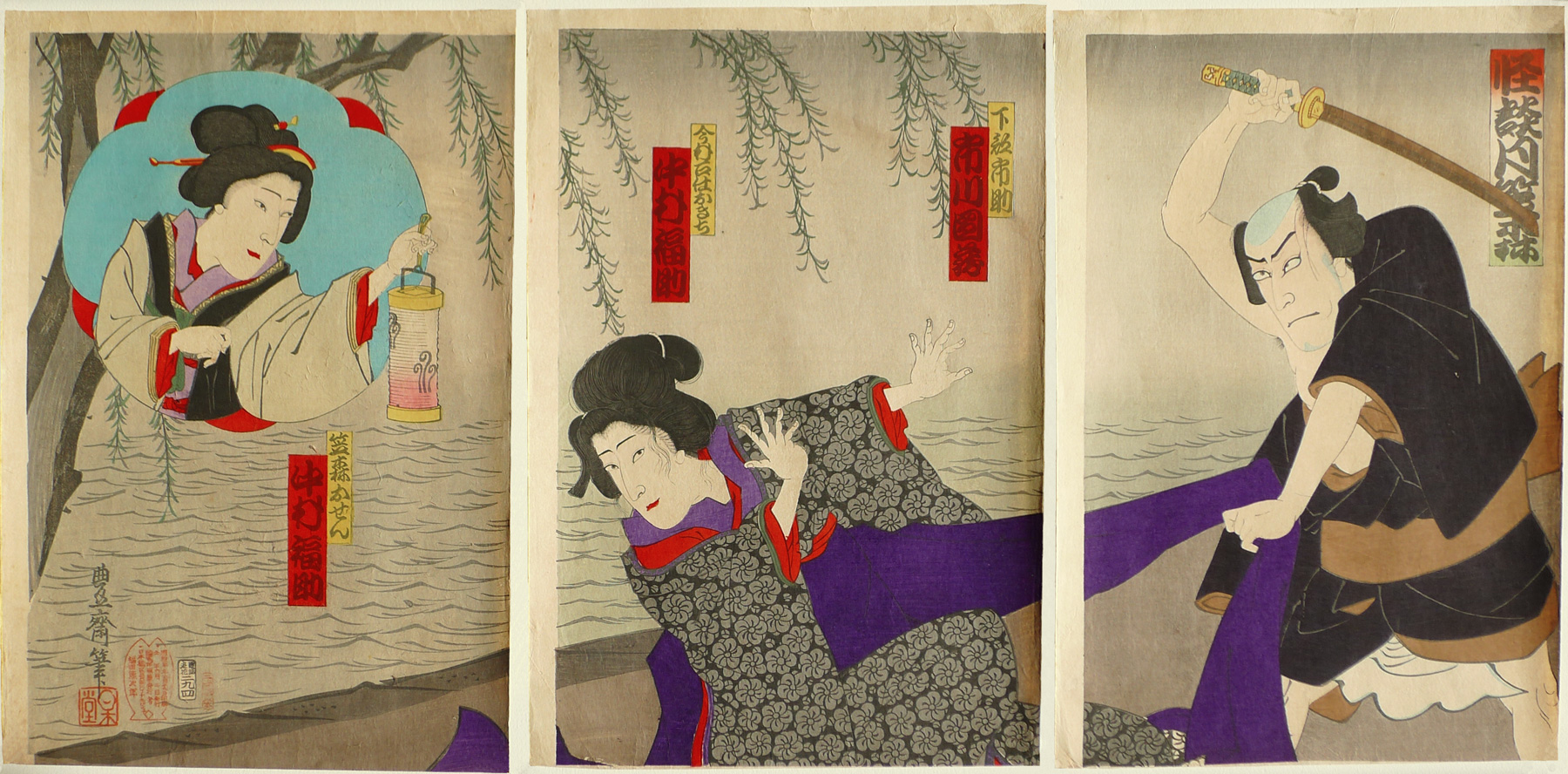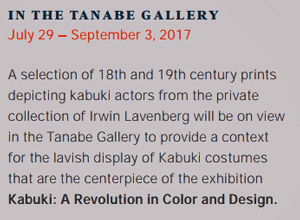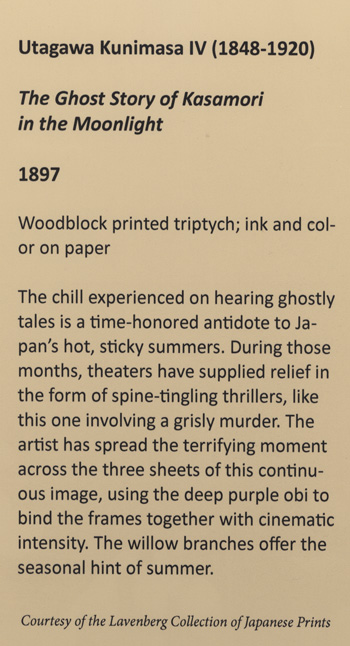About This Print
A triptych depicting a scene from the short play Kaidan Tsuki no Kasamori by the playwright Kawatake Mokuami (河竹黙阿弥 1816-1893.) This play was performed on June 01, 1897 as part of the Kabuki program Yumiharizuki Genke no Kaburaya, which also included the plays Kagekiyo and Gion Sairei Shinkôki.
Kaidan Tsuki no Kasamori is a ghost story involving the historical character Kasamori Osen, a famous 18th century Edo beauty immortalized in print, illustrated books and plays. The role of Kasamori (inset in left panel) is played by Nakamura Fukusuke IV (1865-1940) who also plays the role of of Okichi, maidservant of Imamura, in the center panel. The actor Ichikawa Danzô VII plays the villain Shimobe Ichisuke in the right panel.
The artist, Kunimasa IV (Baidō Hōsai), was well familiar with ghosts, as Newland, in her article in Andon 89, tells us that the artist spoke of seeing apparitions. She goes on to say, "ghosts and monsters were an integral part Edo popular culture and indeed known for centuries in Japan. They were not an uncommon subject in popular oral history and literature, the theatre, in woodblock prints, and later in newspaper reports."1
1 "In the Shadow of Another: Introducing the 'Meiji no Edokko' Baidō Hōsai," Amy Reigle Newland, Andon 89. (December 2010),
p. 89.
Caught in the Act: Woodblock Kabuki Prints from the Lavenberg Collection of Japanese Prints
July 29 - September 3, 2017 in the Tanabe Gallery at the Portland Japanese Garden

synthetic dyes that smacked of evolving times. Even so, traditions in kabuki print design remained: details masterfully rendered; cartouches giving the actor's name and role; the action unfolding across multiple sheets of paper.
The Actors Pictured
For background on the actors Nakamura Fukusuke IV and Ichikawa Danzô VII see their respective entries in the article The Kabuki Actor on this site.Print Details
| IHL Catalog | #591 |
| Title (Description) | The Ghost Story of Kasamori under the Moonlight (Kaidan Tsuki no Kasamori 怪談月笠森) |
| Artist | Utagawa Kunimasa IV (1848-1920) |
| Signature | Hōsai hitsu |
| Seal | rectangular Baidō seal |
| Publication Date | June 29, 1897 (Meiji 30) |
| Publisher |  |
| Impression | excellent |
| Colors | excellent |
| Condition | good- full-size; minor soiling; mounting remnants top corners verso of each sheet |
| Genre | ukiyo-e; yakusha-e |
| Miscellaneous | |
| Format | vertical oban triptych |
| H x W Paper | 14 5/8 x 9 7/8 in. (37.1 x 25.1 cm) each sheet |
| Literature | |
| Collections This Print | Tsubouchi Memorial Museum of Waseda University 100-8946, 100-8945, 100-8944; 403-0465, 403-0466, 403-0467 |




